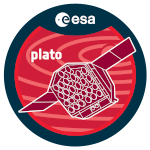Delta Scuti stars are known for their rich power spectrum, in which the immense number of modes that can be excited is reflected. This phenomenon, partly caused by non-linear components, makes it more challenging to obtain asteroseismic parameters and, therefore, to study their phenomenology. Nevertheless, in young delta Scuti stars, an absence of nonlinearities in their spectra is expected due to their evolutionary stage. This makes possible an easier way to identify their pulsation modes and other asteroseismic variables, as previously seen in Bedding et al. (2020).
In this work, we present two studies with two very contrasting approaches: the first is based on the analysis of frequency combinations through observations, and the second is more theoretical by focusing on the study of the oscillation equations. In the observational one, we study a set of light curves belonging to a young sample of delta Scuti stars observed by the satellite TESS and selected from young moving groups and open clusters. After analysing their power spectrum, no frequency combinations were found in these stars, supporting the previously mentioned assumption.
For the other one, a first approximation is presented with the ultimate aim of developing a complete non-linear pulsation code for delta Scuti stars. The process of numerically solving the non-linear differential equations of oscillations for High Amplitude Delta Scuti (HADS) stars is outlined. The equations are described in terms of the so-called Volterra expansion, which uses the generalised transfer functions. These functions, named Volterra coefficients, are required to calculate the values of some equation coefficients. Thanks to the latest ultra-precise photometric data, they can be estimated observationally through amplitude and phase relations between parents and children frequencies (see Lares-Martiz et al. 2020). After obtaining these coefficients, the equations can be numerically solved.
In summary, this is an approach to the long-sought-after complete solution of the non-linear pulsation equations that, in its early stage, can already be helpful for the development of models that more precisely describe the behaviour of HADS stars.
|
|
|
Abstracts > sorted by Authors > Rodríguez Sánchez MiriamOn the path to obtaining non-linear models for delta Scuti Star
1 : Departament d'Astronomia i Astrofısica [Burjassot, Valencia]
2 : Instituto de Astrofísica de Andalucía
3 : Observatori Astronòmic de la Universitat de València
|

 PDF version
PDF version
